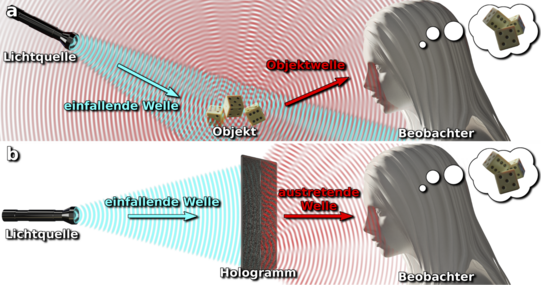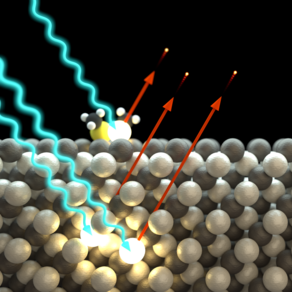Electron Holography
Holography is an imaging technique that can map three-dimensional information onto a flat surface. Instead of measuring the intensity of the individual colors emitted by the scatterers in the observed scene - as a conventional digital camera does - the object is illuminated by a coherent light source. The scattered object wave interferes with the light source in the imaging plane. If the object is then illuminated again by the same light source, the object wave of the object is mimicked and a three-dimensional (albeit monochromatic) object appears.
First proposed by Daniel Gabor in 1948, we are now exploring the applicability of holography for imaging atomic structures. Since the reconstructed objects are the same size as the scattering objects, we must use computer algorithms to visualize the atoms. We are developing algorithms to investigate different approaches to measuring and reconstructing holograms.
The ultimate goal in this research area is to develop a universal method to visualize atomic structures non-destructively.




